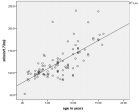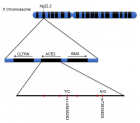Abstract
Research Article
Deriving the Average Change in Kinetic Energy of a Galaxy in Non-Relativistic Motion
Dev Sharma*
Published: 10 June, 2024 | Volume 7 - Issue 1 | Pages: 070-072
This study presents a novel approach to calculating the average change in kinetic energy of galaxies exhibiting non-relativistic motion. The methodology integrates the dynamics of total observed motion, which encompasses both peculiar and recessive motion, with the gravitational influence of neighboring galaxies. The peculiar motion is quantified through peculiar redshift, while recessive motion is described by Hubble’s Law. The total observed velocity is the sum of these two components. The research derives an expression for the average acceleration of a galaxy based on the change in its total observed redshift wavelength over time. Utilizing Newton’s Second Law of Motion, the average observed force and subsequent work done by this force is calculated. The work done by conservative forces, primarily gravitational forces exerted by neighboring galaxies, is also considered to determine the total work done on the galaxy. Results indicate that the average total observed force causing the motion of a galaxy is a non-conservative force, resulting from the combined effects of non-conservative forces responsible for peculiar and recessive motion. The change in potential energy due to gravitational interactions with neighboring galaxies is accounted for, leading to the formulation of the average change in kinetic energy. The conclusion of the paper provides a comprehensive expression for the average change in kinetic energy of a galaxy, factoring in the mass of the galaxy, the speed of light, the total observed redshift, the change in distance with respect to Earth, and the gravitational constant. This expression is significant for understanding the dynamics of galactic motion and the forces at play in a non-relativistic context.
Read Full Article HTML DOI: 10.29328/journal.ijpra.1001087 Cite this Article Read Full Article PDF
Keywords:
Organic waste; Fiber; Frequency; Motion; Sawdust
References
- Tamara MD, Morag IS. Deriving accurate peculiar velocities (even at high redshift), MNRAS. 2014; 442.
- On the orbital and internal evolution of cluster galaxies, MNRAS. 2012; 427.
- Paulino-Afonso. Nature and nurture in galaxy structure and morphology, Astron. Astrophys. 2019; 630.
- Leconte-Chevillard. Eddington, Milne and the cosmological debates of the 1930s, 2020.
- Rebhan. Cosmic inflation and big bang interpreted as explosions. PhysRevD. 2012.
Figures:
Similar Articles
-
Moving space-matter as the basis of the intelligence in the Physical WorldBoris S Dizhechko*. Moving space-matter as the basis of the intelligence in the Physical World. . 2019 doi: 10.29328/journal.ijpra.1001007; 2: 001-003
-
Synthesis of Carbon Nano Fiber from Organic Waste and Activation of its Surface AreaHimanshu Narayan*,Brijesh Gaud,Amrita Singh,Sandesh Jaybhaye. Synthesis of Carbon Nano Fiber from Organic Waste and Activation of its Surface Area. . 2019 doi: 10.29328/journal.ijpra.1001017; 2: 056-059
-
Natural ferromagnetic resonance in cast microwires and its application to the safety control of infrastructuresSerghei Alexei Baranov*,E Adar,AM Yosher. Natural ferromagnetic resonance in cast microwires and its application to the safety control of infrastructures. . 2020 doi: 10.29328/journal.ijpra.1001028; 3: 118-122
-
Influence of high frequency rotating magnetic field on the effect of heating magnetic fluidAndrzej Skumiel*. Influence of high frequency rotating magnetic field on the effect of heating magnetic fluid. . 2021 doi: 10.29328/journal.ijpra.1001035; 4: 015-018
-
Laser spears for the Russian armyVictor V Apollonov*. Laser spears for the Russian army. . 2022 doi: 10.29328/journal.ijpra.1001043; 5: 007-010
-
Harmonic oscillation picture of the free electron Zitterbewegung in vacuumFrédéric Schuller*. Harmonic oscillation picture of the free electron Zitterbewegung in vacuum. . 2022 doi: 10.29328/journal.ijpra.1001045; 5: 016-017
-
Forensic seismology vis-à-vis an underwater explosion for the Roks Cheonan sinking in the Yellow Sea of the Korean PeninsulaSo Gu Kim*. Forensic seismology vis-à-vis an underwater explosion for the Roks Cheonan sinking in the Yellow Sea of the Korean Peninsula. . 2023 doi: 10.29328/journal.ijpra.1001054; 6: 073-089
-
Magnets, Gradients, and RF Coils of MR ScannersŽeljko Đ Vujović*. Magnets, Gradients, and RF Coils of MR Scanners. . 2023 doi: 10.29328/journal.ijpra.1001062; 6: 128-135
-
Fundamental Forces are not Fundamental as our 3-d Universe is Driven by an External Energy SourcePushpak N Bhandari*, Nandan M Bhandari. Fundamental Forces are not Fundamental as our 3-d Universe is Driven by an External Energy Source. . 2023 doi: 10.29328/journal.ijpra.1001068; 6: 167-179
-
Structural Morphology of Organic Waste-derived Fiber in X–band FrequencySirajo Abdullahi*, Yahya Abubakar Aliero. Structural Morphology of Organic Waste-derived Fiber in X–band Frequency. . 2024 doi: 10.29328/journal.ijpra.1001086; 7: 066-069
Recently Viewed
-
Environmental Factors Affecting the Concentration of DNA in Blood and Saliva Stains: A ReviewDivya Khorwal*, GK Mathur, Umema Ahmed, SS Daga. Environmental Factors Affecting the Concentration of DNA in Blood and Saliva Stains: A Review. J Forensic Sci Res. 2024: doi: 10.29328/journal.jfsr.1001057; 8: 009-015
-
Markov Chains of Molecular Processes of Biochemical MaterialsOrchidea Maria Lecian*. Markov Chains of Molecular Processes of Biochemical Materials. Int J Phys Res Appl. 2024: doi: 10.29328/journal.ijpra.1001076; 7: 001-005
-
Generation of Curved Spacetime in Quantum FieldSarfraj Khan*. Generation of Curved Spacetime in Quantum Field. Int J Phys Res Appl. 2024: doi: 10.29328/journal.ijpra.1001077; 7: 006-009
-
Optimizing Milk Safety: Applying Nuclear Techniques in X-ray Fluorescence Spectroscopy for Heavy Metal Quantification in Powdered Milk Consumed in SenegalPapa Macoumba Faye*, Djicknack Dione, Oumar Ndiaye, Moussa Hamady SY, Nogaye Ndiaye, Alassane Traore, Ababacar Sadikhe Ndao. Optimizing Milk Safety: Applying Nuclear Techniques in X-ray Fluorescence Spectroscopy for Heavy Metal Quantification in Powdered Milk Consumed in Senegal. Int J Phys Res Appl. 2024: doi: 10.29328/journal.ijpra.1001078; 7: 010-015
-
Thermoelectric Materials Based on Lead Telluride and Prospects for their Practical ApplicationYuriy Pavlovskyy*, Nadiya Pavlovska. Thermoelectric Materials Based on Lead Telluride and Prospects for their Practical Application. Int J Phys Res Appl. 2024: doi: 10.29328/journal.ijpra.1001079; 7: 016-018
Most Viewed
-
Evaluation of Biostimulants Based on Recovered Protein Hydrolysates from Animal By-products as Plant Growth EnhancersH Pérez-Aguilar*, M Lacruz-Asaro, F Arán-Ais. Evaluation of Biostimulants Based on Recovered Protein Hydrolysates from Animal By-products as Plant Growth Enhancers. J Plant Sci Phytopathol. 2023 doi: 10.29328/journal.jpsp.1001104; 7: 042-047
-
Sinonasal Myxoma Extending into the Orbit in a 4-Year Old: A Case PresentationJulian A Purrinos*, Ramzi Younis. Sinonasal Myxoma Extending into the Orbit in a 4-Year Old: A Case Presentation. Arch Case Rep. 2024 doi: 10.29328/journal.acr.1001099; 8: 075-077
-
Feasibility study of magnetic sensing for detecting single-neuron action potentialsDenis Tonini,Kai Wu,Renata Saha,Jian-Ping Wang*. Feasibility study of magnetic sensing for detecting single-neuron action potentials. Ann Biomed Sci Eng. 2022 doi: 10.29328/journal.abse.1001018; 6: 019-029
-
Pediatric Dysgerminoma: Unveiling a Rare Ovarian TumorFaten Limaiem*, Khalil Saffar, Ahmed Halouani. Pediatric Dysgerminoma: Unveiling a Rare Ovarian Tumor. Arch Case Rep. 2024 doi: 10.29328/journal.acr.1001087; 8: 010-013
-
Physical activity can change the physiological and psychological circumstances during COVID-19 pandemic: A narrative reviewKhashayar Maroufi*. Physical activity can change the physiological and psychological circumstances during COVID-19 pandemic: A narrative review. J Sports Med Ther. 2021 doi: 10.29328/journal.jsmt.1001051; 6: 001-007

HSPI: We're glad you're here. Please click "create a new Query" if you are a new visitor to our website and need further information from us.
If you are already a member of our network and need to keep track of any developments regarding a question you have already submitted, click "take me to my Query."

















































































































































